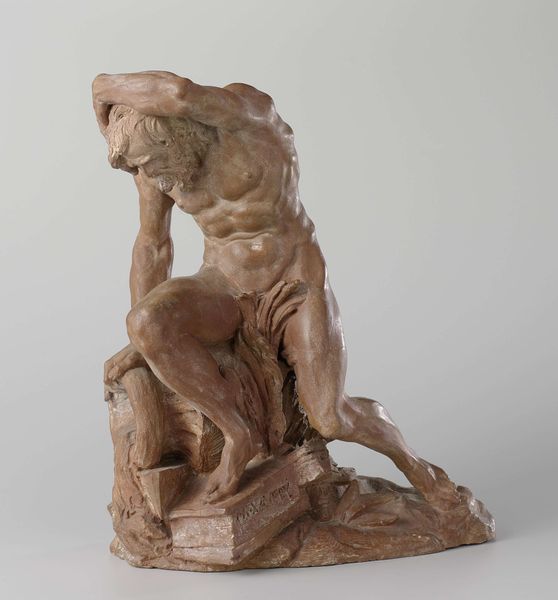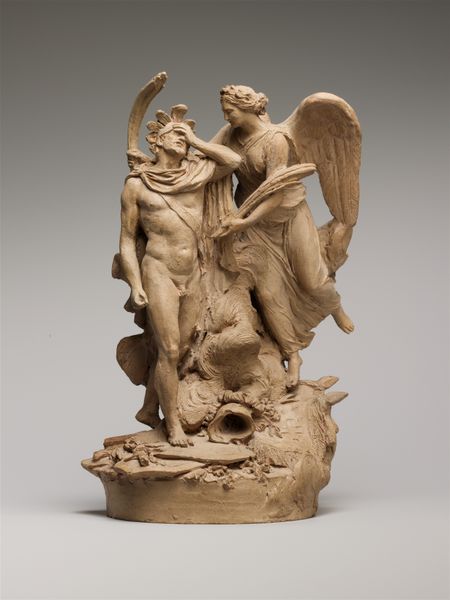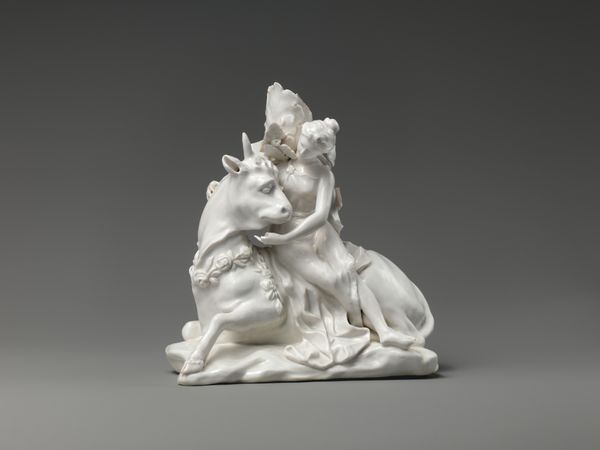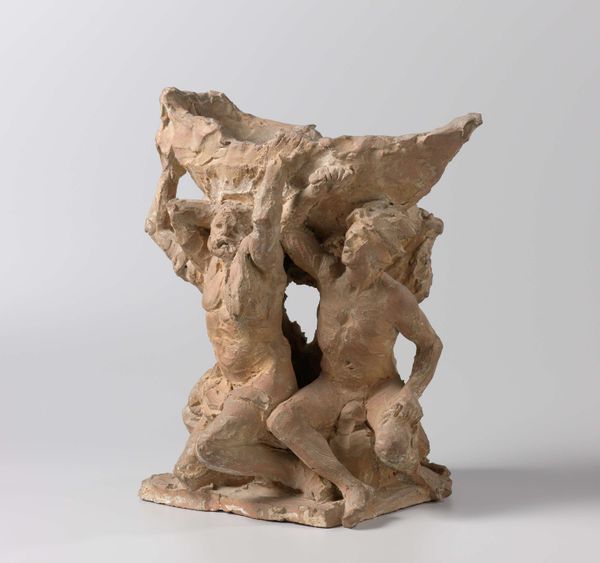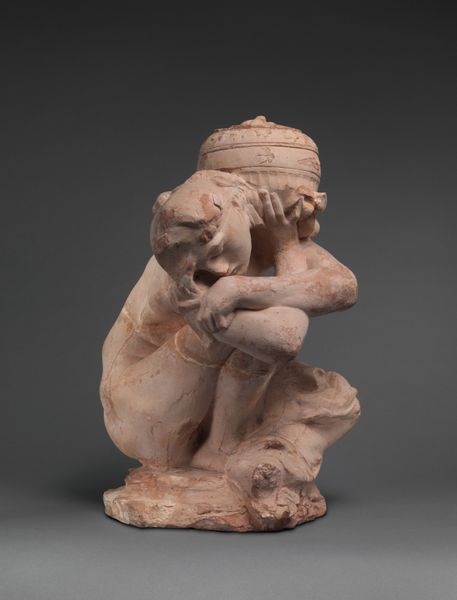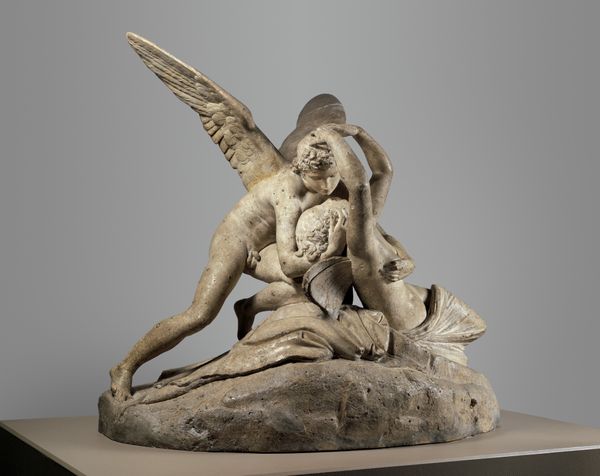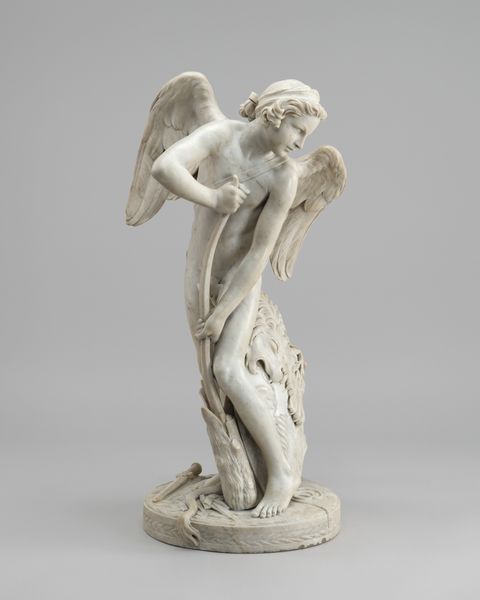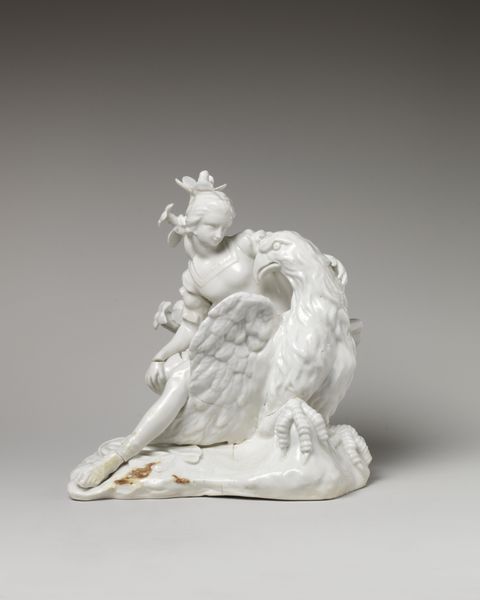
Architectural Relief Depicting the Gigantomachy (Battle Between Gods and Giants) c. 3th century
0:00
0:00
ceramic, sculpture
#
sculpture
#
greek-and-roman-art
#
ceramic
#
figuration
#
ancient-mediterranean
#
sculpture
#
history-painting
Dimensions: 45.8 × 46 × 21.9 cm (18 1/16 × 18 1/8 × 8 5/8 in.)
Copyright: Public Domain
Curator: Editor: So here we have a terracotta architectural relief from around the 3rd century, titled "Architectural Relief Depicting the Gigantomachy (Battle Between Gods and Giants)." It’s currently housed at the Art Institute of Chicago. What strikes me is the violence of the scene; the bodies are so intertwined and dynamic. What's your take on this work? Curator: The dynamism definitely speaks to the conflict it depicts, but it’s vital to consider whose story is being told and why. The Gigantomachy, a battle between the Olympian gods and giants, wasn't just about divine power; it symbolized the triumph of order over chaos. But what did "order" represent in that society, and who benefited from it? Editor: I see your point. It’s not just a historical depiction, but an ideological statement. So, were these reliefs typically found in specific places? What purpose did they serve? Curator: These architectural reliefs would often adorn temples and public buildings. Think about the power dynamics at play: by placing this narrative on their sacred spaces, the elite visually reinforced their authority and justified their social hierarchies. It links divine power to earthly rule. Can you think of contemporary parallels where art is used to uphold certain power structures? Editor: Political monuments come to mind, definitely, but even in advertising, we see idealized bodies and lifestyles used to promote capitalist values. Is it fair to see a connection between then and now? Curator: Absolutely. It’s crucial to recognize that art is never neutral; it always reflects and reinforces, or sometimes challenges, prevailing ideologies. The key is to critically examine those ideologies and understand whose interests are being served. Editor: This has completely shifted my perspective! I initially saw an exciting action scene, but now I'm considering its implications and how it was used to justify social and political order. Curator: Exactly! Questioning these historical narratives helps us see how similar tactics continue today. Looking critically at art from the past informs how we understand art and power in the present.
Comments
No comments
Be the first to comment and join the conversation on the ultimate creative platform.


